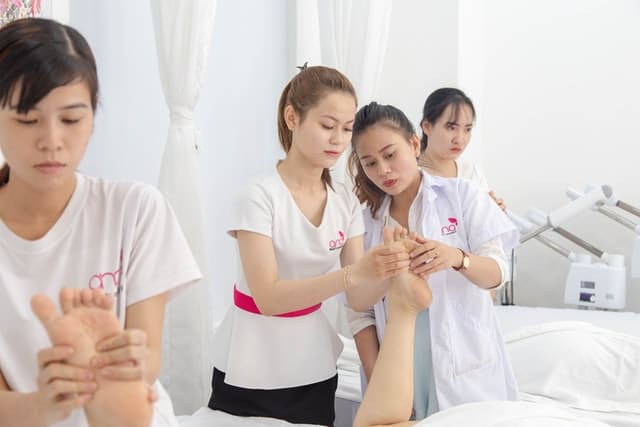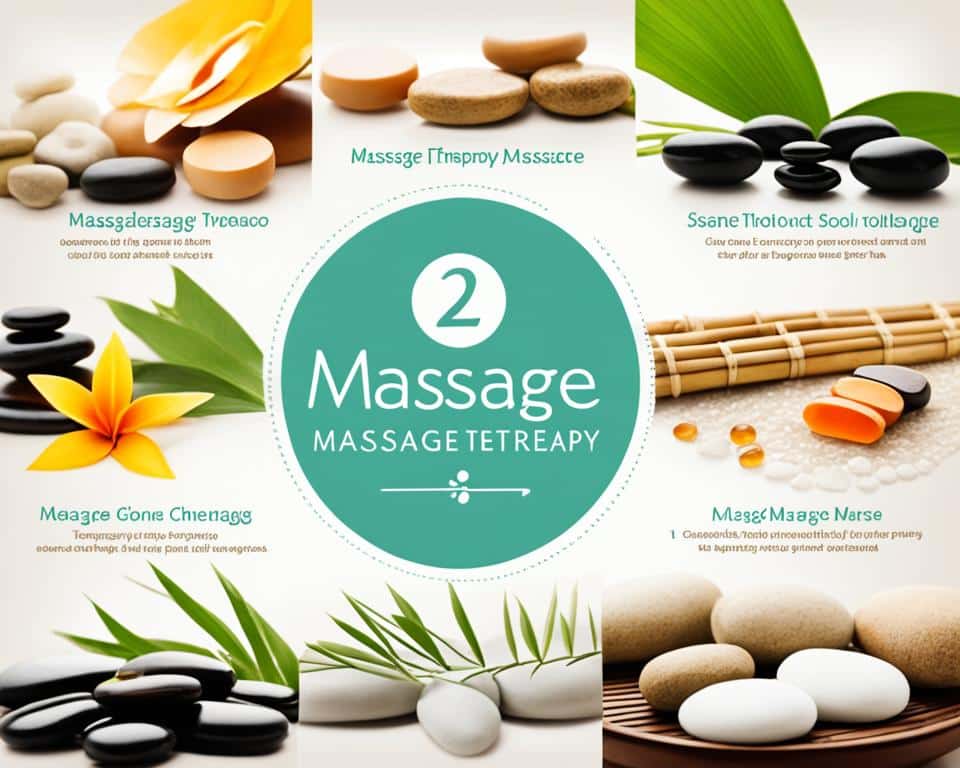Shiatsu is of Japanese origin, which means “finger pressure.”
What is Shiatsu Massage?
A look:
Shiatsu massage is a technique therapists use to apply pressure on specific points of your body.
Acupressure Points:
In Shiatsu massage, the points on which rhythmic pressure is applied are called acupressure points. That is why Shiatsu massage, also known as acupressure, works.

Technique Involves:
According to the Japanese healing treatment, Shiatsu (meaning finger pressure) massage uses thumbs, fingers, elbows, and knees to concentrate force at specific energy pathways in the body called meridians.
Shiatsu massage therapists usually recommend resting (and drinking water) for an hour after your session to give your body time to detoxify and recuperate.
A Myth:
Acupressure points are essential for the flow of the body’s vital energy called Chi.
A ViewPoint:
It is said that shiatsu massage helps relieve blockages from the acupressure points.
What Shiatsu Is In Actual?
It’s a Japanese therapeutic bodywork that uses pressing, kneading, tapping, stretching, and soothing techniques.
Oils are not part of it!
Shiatsu massage is performed without oils; it is done through light-comfortable clothing.
History of Shiatsu Massage
In the early 1900s, during Japan’s renewal of traditional medical therapies, Shiatsu gets a start with different styles of Acupuncture and Anma massage.
All these styles have their roots in one of the Japanese three systems formed at that time. Shiatsu forms a large part of Bodywork Therapy in Asia and America.
Benefits
- Shiatsu helps in revealing muscle tension, fatigue, and pain from acupressure points.
- Improves blood circulation in the body
- Improvers function of the lymphatic system
Is Shiatsu beneficial to your health and wellbeing?
Shiatsu is invasive therapy that helps you reduce stress and contributes to your wellbeing, which tends to be deeper and more active than other massages.
It has both remedial and preventative effects.
- Depending on the session’s goal, the effect may be stimulating and invigorating or calming and soothing.

Top 5 Benefits of Shiatsu Massage
- It is used to treat a wide range of musculoskeletal, internal, and emotional conditions.
- It reduces muscle stiffness, aids digestion, influences the nervous system, and stimulates the skin.
- It is used to treat a wide range of chronic conditions, such as; headaches, PMS, digestive disorders, fatigue, insomnia, and fibromyalgia.
- It also treats stress, anxiety, and musculoskeletal pain( includes low back, neck, and joint pain)
- It makes you feel loose and invigorated.
Chi-Shiatsu Massage Follows the Energy Flow
Chi- Vital Energy in our bodies:
According to Japanese fundamental concepts, Qi- pronounced as Chi, is the vital energy of our bodies that performs basal functioning.
Chi Pathways- the Meridians:
Meridians are the specific pathways Chi flows in. The therapists of Shiatsu access Chi through vital points along the meridians.
Health VS Chi:
When Chi is abundant in the meridians, and the flow is even without any obstruction, then health is present. When Chi is out of balance because of the obstruction in the flow, then health decreases.
It is followed by symptoms appearance, such as; regular colds and flues, weekly or daily headaches, digestive difficulties, body aches, or muscular pains.
The Imbalanced Chi:
When the Chi gets imbalanced, Shiatsu massage harmonizes and stimulates the flow of Qi throughout the body.
Shiatsu therapist is trained to recognize the pattern of disharmony in the body, even before the appearance of the symptoms.
Chi Balance can be restored:
You can restore the Chi balance with regular Shiatsu sessions and assessments.
A Shiatsu session
As the session begins, a shiatsu practitioner first determines the imbalanced pattern of Chi, if it’s present. To give the client the most effective therapeutic session, a practitioner needs to assess the “state of the Chi.”
After the evaluation of Chi, the practitioner designs a plan that gives a client the most therapeutic benefit according to its needs. If the client’s energy is deficient, the practitioner uses specific techniques to vitalize and enhance the Chi.
If the client is over-stressed, anxious, or wound-up, the practitioner applies the techniques to disperse the “excess” energy. In this way, the Qi is restored.
Shiatsu Session is like:
Typically a Shiatsu session lasts for an hour. Depending on the area you need to work on, you will usually wear loose-fitting clothing and lie on a padded mat or sit on a unique couch.
Shiatsu, a whole-body treatment, is accomplished mostly with palm or finger pressure and with knees, elbows, and feet for extra-tense muscles.
Session Regulation:
To maintain wellness and improve vitality, a regular maintenance program of Shiatsu is an excellent way, but the schedule varies from person to person.
One Shiatsu session per month may work well to maintain balance for a few. But for others with a high-stress job, family demands, an overactive lifestyle, lack of exercise, and other factors may require Shiatsu sessions to be held regularly.
Is Shiatsu Evident to be True?
Shiatsu, Japan’s primary and manual therapy, is being researched and published in Japanese journals. The research is Japanese and is not usually published in English.
Shiatsu- In Terms of U.S Evidence:
The United States considers Shiatsu, a member of either acupuncture or massage therapy. The leading research by the U.S. proposes that therapeutic bodywork focuses on massage and some other energy therapies.
The evidence from the U.S. on Shiatsu is just narrative, with no scientific evidence. Their reports about Shiatsu are exclusively based on the experiences of clients, therapists, and practitioners.
Research to be organized for Shiatsu:
The evidence by the U.S. on Shiatsu is just anecdotal. However, Individuals and schools are there to organize research studies on Shiatsu. Currently, some research on the effectiveness of Shiatsu is being conducted in Europe.
According to the limited evidence report:
Now, according to the limited evidence source on Shiatsu, it is worth saying that the risk is low while significantly reported benefits are more.
Finding a Shiatsu practitioner
Asia’s AOBTA: American Organization for Bodywork Therapies is an organization that entirely represents Shiatsu and Asian bodywork therapists-ABT. This website owns the “Find a Practitioner” page.
Throughout the United States, Shiatsu and Asian Bodywork Therapists are located, even in the school locality.
Credentials for Shiatsu and ABT:
Shiatsu and ABT’s highest qualification and achievement is the national certification exam for Asian Bodywork Therapy administered by NCCAOM, the National Certification Commission for Acupuncture and Oriental Medicine.
“A practitioner is called a Diplomate of ABT if he passes the exam.”
What more is, Shiatsu graduates are eligible to take the National Certification Exam for Therapeutic Massage and Bodywork from the National Certification Board for Therapeutic Massage and Bodywork-NCBTMB.
NCCAOM-Practitioners Page:
The NCCAOM website is also with a “Find a Practitioner page.”
Various Styles of Shiatsu Massage
Shiatsu is based on the same principles of acupuncture and acupressure. However, various styles and therapists take different approaches.
For instance, some therapists concentrate on influencing the energy flow, while others focus on acupressure points.
There are four most common types of Shiatsu, namely:
- Zen
- Five Elements
- Ohashiatsu
- Ashiatsu
1. Zen Shiatsu
Zen shiatsu is a technique that involves pressure from the hands, knees, fists, elbows, and palms. This technique mostly focuses on acupressure points, which are more therapeutic than relaxing.
It’s perfect if you’re looking for a more active and deeper massage than something luxurious and relaxing.
2. Five Elements Shiatsu
Five Elements Shiatsu absorbs concepts from Traditional Chinese Medicine to diagnose imbalances in different parts of the body. Five Elements Shiatsu is a more energy-balancing approach than many other traditional shiatsu techniques.
3. Ohashiatsu
In addition to focusing on energy work- Ohashiatsu- and even incorporates meditation. Both Five Elements and Ohashiatsu methods offer less feeling of a traditional massage, despite many people still enjoying its grounding and relaxing effects.
4. Ashiatsu
In the Ashiatsu technique, the therapist uses the feet to apply intense pressure and makes deep muscle relaxation. You have to lie on your stomach while your therapist walks on your back.
How do You feel During Shiatsu Massage?
In Shiatsu, the therapists constantly apply deep pressure using their fingers, thumbs, and palms. They use finger pads to apply pressure. Typically, each acupressure point is held for two to eight seconds.
Your therapist can adjust the pressure to make the massage more comfortable for you if the stimulated pressure points; Shiatsu may feel tender.
Those who receive shiatsu massage describe the tenderness as “good pain.” However, if you feel discomfort or pain during your massage, it’s crucial to alert your therapist!
Safety and Side Effects Shiatsu Massage
- While Shiatsu is generally considered safe when done by qualified professionals, specific individuals should take caution and consult a physician before receiving Shiatsu.
- For example, some say that Shiatsu may cause harmful effects in pregnant women, patients who have recently undergone chemotherapy or radiation, and people with osteoporosis, heart disease, and blood clotting disorders.
- Additionally, Shiatsu should not be performed directly over inflamed skin, unhealed wounds, tumors, abdominal hernia, or areas of recent fractures.
- People with leg stents should avoid abdominal massage.
- Avoid Shiatsu massage after surgery and by people with infectious skin disease, rash, or open wounds.
Shiatsu Massage Therapy- Facts and Figures
According to an annual survey commissioned by the American Massage Therapy Association, more than 39 million Americans received Shiatsu massages last year.
More than half a group, who discussed massage with their healthcare providers, say their doctor recommended they get massage therapy.
Massage has been shown to reduce blood pressure and heart rate while increasing endorphins, the body’s natural painkillers.
Shiatsu- Similarities and Differences from Other Techniques
Similarities:
Shiatsu massage uses are similar to those found in other treatment methods such as lymphatic drainage, physiotherapy, and osteopathy.
Differences:
However, Shiatsu practitioners accredit physical health conditions and diseases to blockages and imbalances in the energy flow throughout the body, which differentiates its diagnosis and treatment from other massage therapy modalities.



